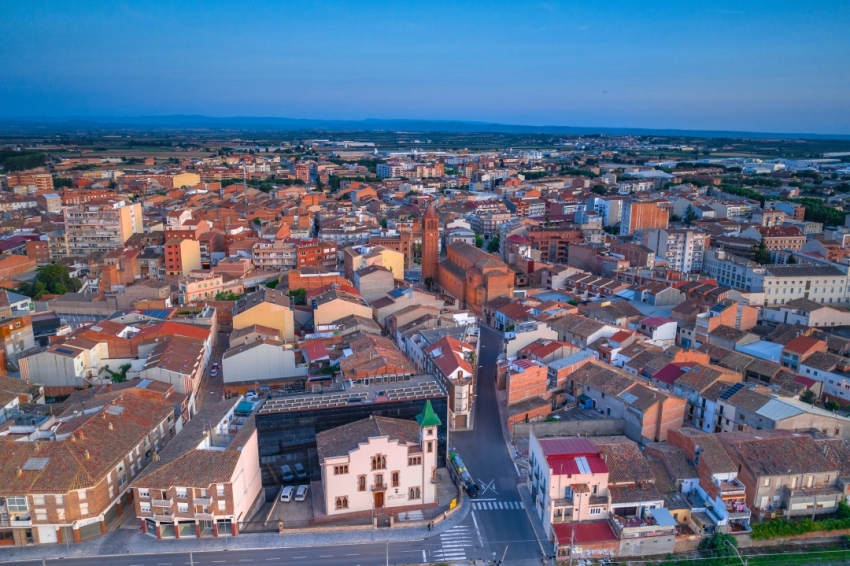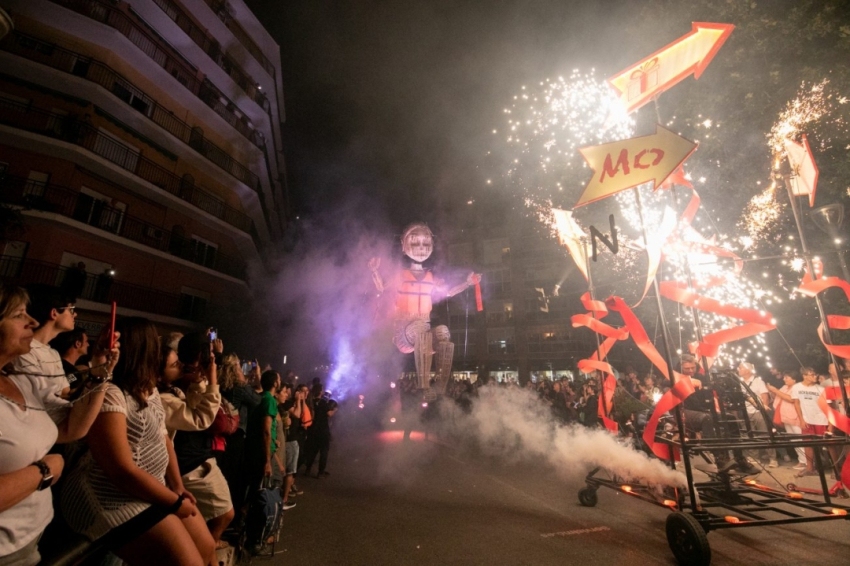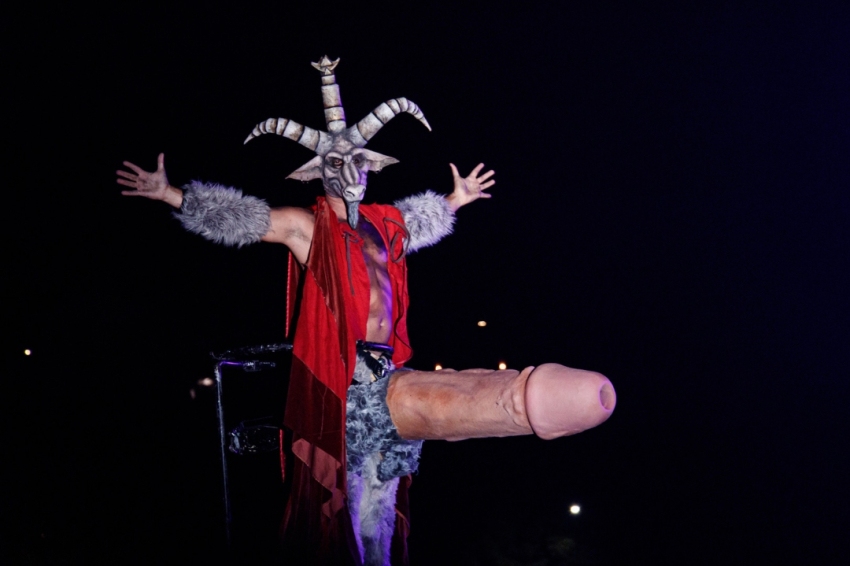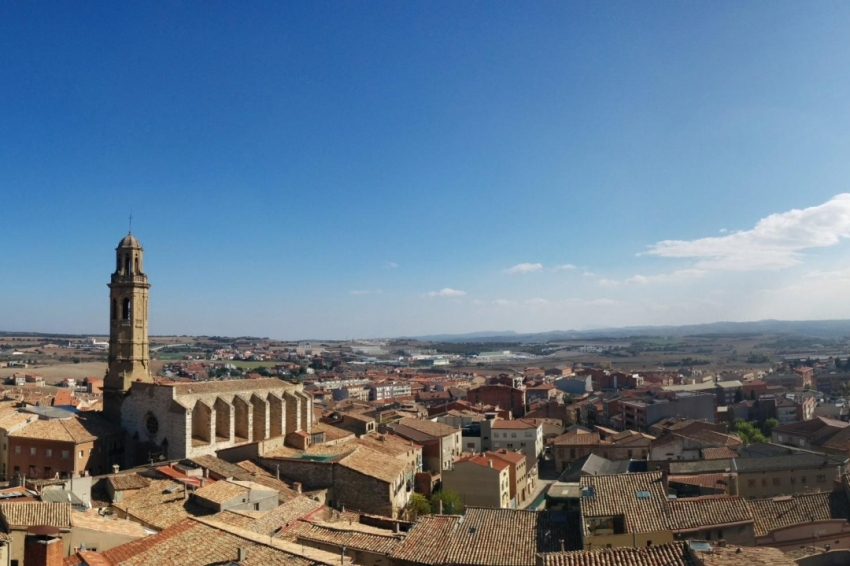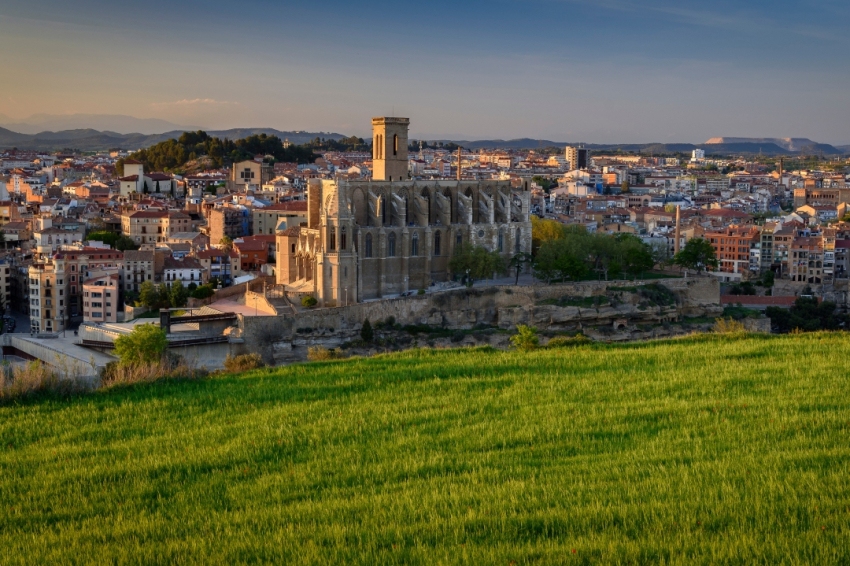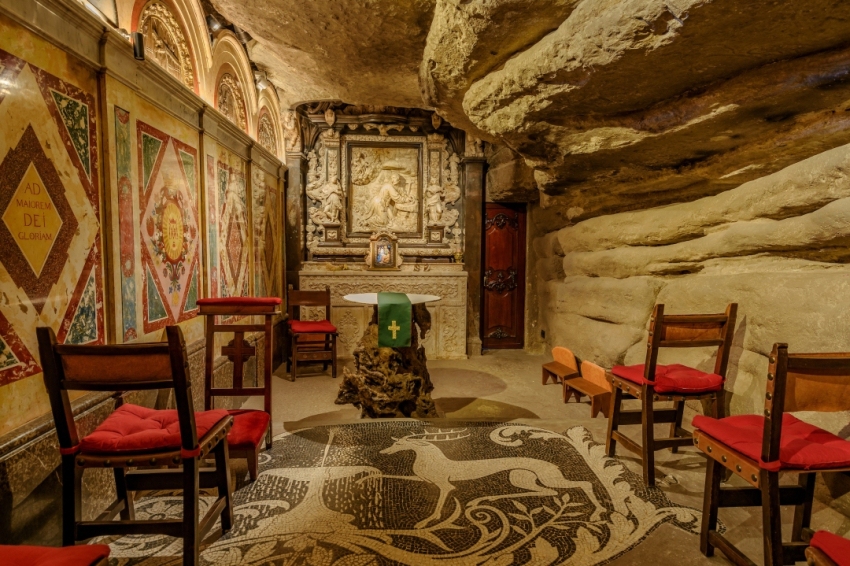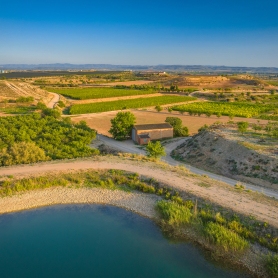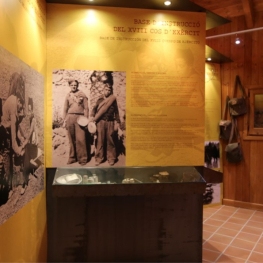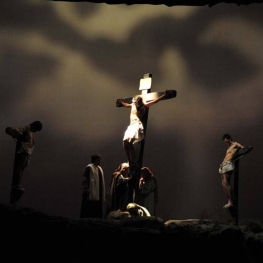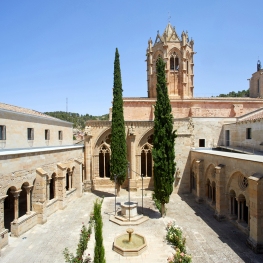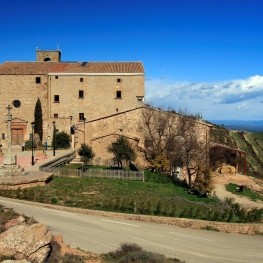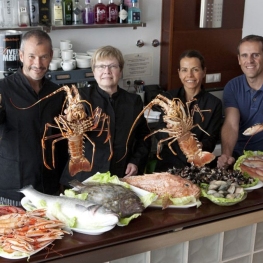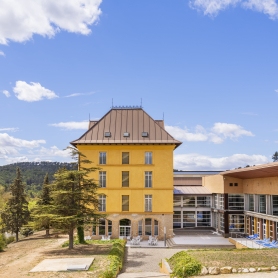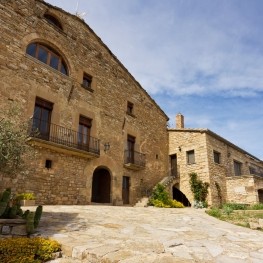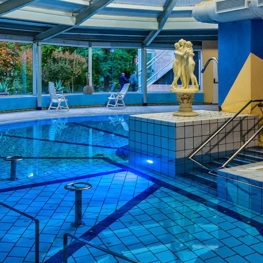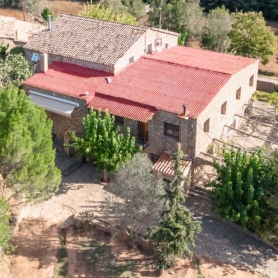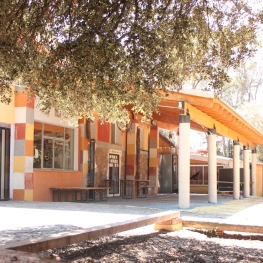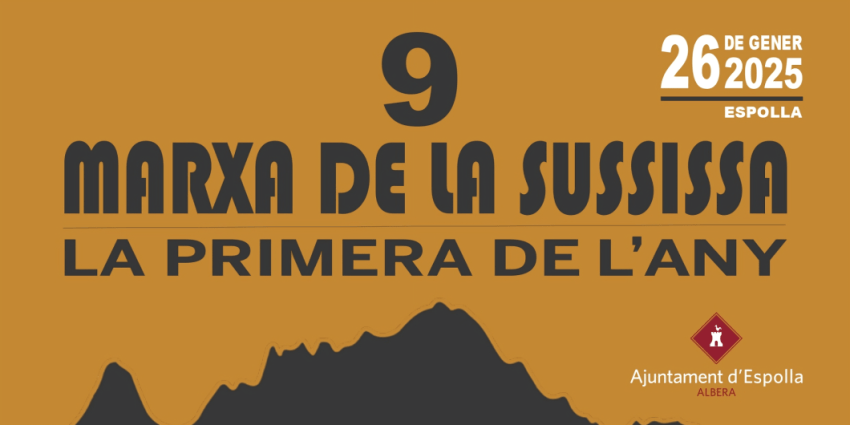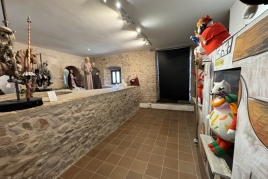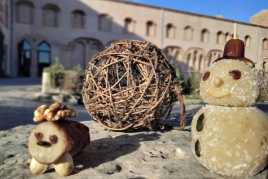Culture and legends of Ponent in the heart of Catalonia by electric car
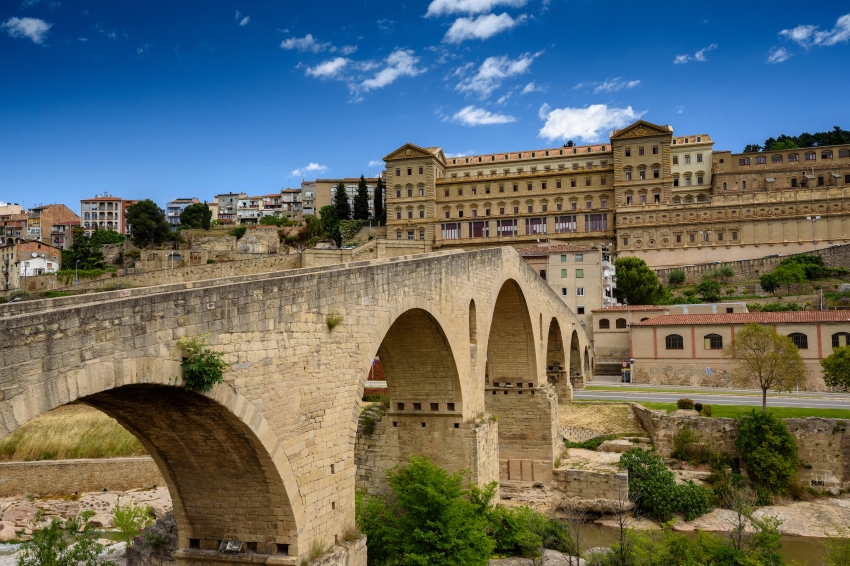
![]()
This route is designed to be done by electric vehicle, although it can be done with any other car. Along the route we will suggest municipalities that have charging points and places of interest to visit while we charge batteries.
Electric cars are a good way to decarbonise road transport These vehicles do not emit greenhouse gases and do not need fossil fuels to run, which which makes them a viable option to help reduce our CO₂ footprint.The constant improvement in the technology of these cars makes them increasingly efficient and ecological.
Consult also the recommendations when traveling by electric car.
5
Number of sections
91,8
Total kilometers
Catalonia is a territory with an unmatched cultural wealth. Towns, villages, cities and also their people, have a history steeped in traditions that will surely surprise you and that perhaps you did not know about.
On this route that we have prepared for you to do by electric car, we will go from Ponent to the heart of Catalonia following the traditions and legends of some cities that will captivate you with their beauty and history.
Mollerussa, Tàrrega, Cervera, Calaf and Manresa are the five places where you will have to make a mandatory stop while you load your vehicle at the indicated points. Perhaps these are not the best-known cities in the country, but for this reason we believe that it is essential to visit and discover them.
Paper suits. Theater. Fire. Passion. Myths. Legends. Light.
You dare?
Using these concepts, start the engine and get ready to drive. The traditions, festivals, stories and legends that we will present to you will surprise you.
Before going first, however, we warn you that this route can be done in both directions. In this case we start in Mollerussa, but if it is better for you to start from Manresa, the quality of the knowledge that you are going to acquire will not suffer.
Mollerussa, the city of paper suits
The capital of the Pla d'Urgell region will be the starting point of the route. Mollerussa is a city marked by its industrial activity, with a population of 14,500 inhabitants and an area of 7.1 km², which makes it the city with the highest population density in the province of Lleida. Although its area is small, we recommend being there to visit its main attractions.
The first obligatory stop you will have to make will be at the Mollerussa Paper Costume Museum. The National Paper Costume Competition is held in Santa Lucía, a competition that since 1964 has included a series of costumes made entirely of paper at the Teatro de la Amistad. This tradition grows year after year and in December 2009 the new Mollerussa Paper Costume Museum opened its doors.
There you can see more than eighty dresses on display and discover the beginnings of the contest that has marked the city so much. The paper suits made by the dressmakers are authentic works of art that will truly surprise you, since all of them are unique, handmade pieces, whose precision and quality could parade on any global catwalk.
Leaving the Paper Costume Museum, we recommend that you go to the center of the town, where you can reach it, a few meters away, on foot.
There you can enjoy the Town Hall building, the Sant Isidori Chapel and, above all , the spectacular Sant Jaume church. This religious center of the region dates back to the mid-20th century and is inspired by Florentine architecture, with a basilica plan with two side naves and a much higher central nave and access staircase, with an octagonal baptistery and a square bell tower, both independent. The bell tower is also inspired by medieval Italian ensembles, it is square in shape and from the base to the top it is 40 meters high.
Inside the chapel you can find the carving of the Virgin of Montserrat and that of the Holy Christ, two works made by Josep Martí-Sabe, one of the most relevant sculptors in Catalonia.
Finally, before you leave the capital of Pla d'Urgell, we recommend that you visit the Cultural Space of the Canals of Urgell, located on the ground floor of the Casa Canal de Mollerussa. This is an interpretation center where the transformation that the construction of the Urgell Canals in the 19th century has meant for the territory from a natural, social and economic point of view is explained. The Espai Cultural has two different areas, a fixed exhibition on the canals and the territory and a temporary exhibition room, as well as an outdoor garden with restored pieces such as the lute, the wagon, the fan machine, the senio boat, the grain loader or churning machine.
![]()
Next stop
25 KM (Tàrrega)
And meanwhile: We recommend a literary route. Specifically, the Maria-Mercè Marçal Literary Route in Ivars d'Urgell. The well-known Catalan poetess was originally from this town, and in her honor a route has been created with thirteen physical panels located in the streets of the town to tour the most important points in Marçal's life. The route can be done on foot or by bicycle, on your own or with a guided tour. And meanwhile: if you stop in Arbeca to charge batteries in the vehicle, you should know that you have stopped at the cradle of the Arbequina olive. For this reason, we recommend that you participate in the activity "Visitas sucadas amb oli", where you can take a trip through the tradition of the landscapes of Arbeca, the land where the most precious variety of olive in the world was born: the arbequina. The activity consists of a guided oil tasting and a visit to the old presses of the Arbequina Cooperative. And in the meantime: you can leave the car charging and take a walk through the spectacular monumental complex of Turó de la Seu Vella. The Seu Vella church, the Suda Castle and the military fortification that surrounds the entire hill are the most recognized place in the capital of Segrià and are a must-see. From there you can enjoy impressive views of the city and the entire Lleida plain.![]()
Need to recharge?
Tarrega
Ivars de Urgell (12 km)
Arbeca (11 km away)
Lleida (22 km away)
![]() CIM LLEIDA, Carrer V, PARCELA 7
CIM LLEIDA, Carrer V, PARCELA 7
Tàrrega, the capital of theater
Once you have known all the secrets of Mollerussa, get back in the car and head east along the A-2 road. With only 20 minutes of walking you will find yourself in the middle of Tàrrega, the capital of the Urgell region.
Tàrrega is a city of almost 18,000 inhabitants and an area of 88 km². Located on the Lleida plain, it is a prominent shopping and service center in the eastern area of Terres de Ponent, for this reason it is a good place to make your second stop on the route.
In the same way that in the first destination culture plays a relevant role, in the second it could not be less. Tàrrega is the capital of the theater world in Catalonia, especially for the celebration of the Street Theater Fair, an event that is held during the month of September and welcomes companies and visitors from all over the world. FiraTàrrega is the most important international performing arts market in Catalonia, the one with the longest history in the Spanish State and one of the most relevant in Europe.
But if you are not lucky enough to schedule your route during the month of September, the capital of Urgell has other attractions, such as the splendid Sant Eloi Park. If you want to find a place for leisure and recreation, this is your destination. The park is the most relevant in the city and in addition to enjoying a good walk, at the top of the Sant Eloi mountain range you can visit the hermitage dedicated to Saint Eloi himself, founded in the year 1248, where you will find a viewpoint from where There is a magnificent view of the city.
But this will not be the only thing you can visit in the park. In its 17 hectares of land you can find unique heritage elements such as the Gothic window or the Plaza de Sant Jordi, as well as a large set of fountains, about seventy species of trees and shrubs, or an open-air museum based on industrial and agricultural.
If you still haven't gotten tired of walking through the park, the old town of Tàrrega is also a very interesting recommendation. There you can enjoy the Santa Maria del Alba church, a historical monument protected as a cultural asset of national interest that is located in the Plaza Mayor. Without going too far, you can also visit Call Jueu, since the capital of Urges is one of the most important centers for disseminating Catalan Judaism. You can visit, for example, the Avraham Xalom House, a building in the old town that has been the subject of a careful adaptation and museumization process.
![]()
Next stop
13 KM (Cervera)
And meanwhile : if you stop in Guissona you should know that you are in a town with a lot of history. Therefore, we recommend a guided tour of the Roman city of Iesso. Through this route you will enter the Roman Guissona. The wall, the entrance, the houses and the baths will help you get to know the Roman splendor of the town. If you still don't have enough and want to know more, you can complement the visit by entering the Archaeological Museum of Guissona.![]()
Need to recharge?
Guissona (21.5 km)
Cervera, land of fire and passion
With the beauty and history of Tàrrega still in your retina, we recommend that you take the A-2 highway again and head to the city of Cervera. Only 11 minutes by electric vehicle separate the two cities.
Located in the center of Catalonia, at the eastern end of the province of Lérida, Cervera is the capital of the Segarra region and has a census population of more than 9,000 inhabitants. Its 55.2 km² are established and begin on a hill, a geographical location that characterizes the structure of the city.
“Land of fire and passion” is Cervera 's motto. And because? You will ask yourself. Because walking its streets is entering a mural of great architectural beauty that makes it one of the great historical and artistic heritages of Catalonia.
And as in your previous stops, culture plays an important part. The Passion of Cervera, the Easter Festival, the Medieval Passion, San Magín, the Bread and Cereal Fair... and above all, the Coven. This is the festival of fire, music and witches, an explosion of popular culture where the visitor can find a great variety of pyrotechnic shows, magical performances with the Billy Goat in front and also music, merriment and syringe.
The celebration takes place on the last Saturday of August and a big party is organized throughout the city, with special attention to the Les Bruixes alley, the old town and the historic center of the city. The so-called Witches' Alley is one of the best-known spaces in the city. Historically, this passage was part of the first walled enclosure of the town and had the characteristics of a dark, narrow and gloomy passage.
But beyond culture, Cervera also has a special architectural complex. Starting with the University building, the most representative of the city. Created between 1718 and 1740, it is an imposing construction declared a cultural asset of national interest.
Not far from the university, other buildings that will surely make Cervera captivate you are the Paeria, with the corbels under the balconies, the Gothic temple of Santa Maria, located in the middle of the city's founding hill, or El Sindicato, a work by Cèsar Martinell, a disciple of Antoni Gaudí.
![]()
Next stop
23,8 KM (Calaf)
Calaf and its market
Distance: +23.8km
After leaving Cervera behind, take the C-25 highway and continuing towards the center of the country, travel about twenty kilometers to reach Calaf in just over a quarter of an hour.
This municipality in the Anoia region is the smallest you will visit, since it only has about 3,600 inhabitants and an area of 9.2 km². But despite being a town without the magnificence of Mollerussa, Cervera or Tàrrega, it will also offer you enough attractions to make a stop.
And as it could not be otherwise on this route, culture and popular tradition have an important weight. Have you ever heard the expression, “that looks like the Calaf market” when you are in a noisy place? The phrase comes from the legend written by the writer and poet Apel·les Mestres when in 1895 he published the volume Tradiciones within the Catalan Folklore collection of the Espasa & Cía Typography of BCN.
The Calaf market has existed since 1226 and during the 16th century it was considered one of the most important in Catalonia. Legend says that on a market Saturday it was so cold that words froze and only silence was heard. At noon the sun rose, and the words thawed all at once, causing an uproar in the square never seen before. Since then, this expression is used when there is a lot of commotion somewhere.
However, it should be noted that currently the market is not held in the same place. However, if you go, you might also hear the commotion at sunrise. Historically, the Calaf market was held until the 20th century in Plaça Gran, but for reasons of space it was moved to Raval de Sant Jaume, where it is held today every Saturday.
Beyond the culture and legend of the market, Calaf has other unique attractions . Calaf Castle is one of them. Built almost a thousand years ago, the fortification rises to 714 meters, with walls that reach 10 meters in length and 3 meters in thickness. If you decide to go, from 2022 you can take a guided tour in virtual reality (3D).
And before leaving Calaf, don't forget to stop by the Plaza Grande, declared Cultural Asset of National Interest. Located in front of the church of Sant Jaume, another of the places that you cannot miss, the square is surrounded by buildings built on porches, some with semicircular arches and others with lowered arches. The set will be most spectacular for you.
![]()
Next stop
30 KM (Manresa)
And in the meantime: we cannot recommend another visit than the monastery of Sant Benet de Bages, a jewel of the Catalan Romanesque. Declared a Cultural Asset of National Interest, it is one of the best preserved monastic complexes from the Middle Ages in Catalonia. Currently, Món Sant Benet has been created around the monastery, a cultural, gastronomic, tourist and leisure project of great uniqueness that will surely captivate you. And in the meantime : with the car parked and charging, we recommend you delve into the heritage of dry stone. The Vilomara Bridge and Bages are the ideal region. Dry stone vats are unique stone constructions used in the past to produce wine in the same fields in which they were grown. In the municipality, 103 dry stone tubs have been cataloged in different states of conservation and you can find a route to see the most relevant ones.![]()
Need to recharge?
Manresa
![]() Carrer de Bertran de Castellbell, 81
Carrer de Bertran de Castellbell, 81Sant Fruitós de Bages (8 km away)
![]() Carrer Montsant, 18-24 (polígon industrial Casa Nova)
Carrer Montsant, 18-24 (polígon industrial Casa Nova)![]() Carrer Aneto, 2-12 (polígon industrial Sant Isidre)
Carrer Aneto, 2-12 (polígon industrial Sant Isidre)The Vilomara Bridge (8 km away)
Manresa, the city of light
And continuing along the C-25 highway you will reach the final point of your route: the heart of Catalonia. After about twenty minutes on the road, Manresa and its traditional light await you to round off a path full of culture, tradition and magic.
Manresa is the capital of the Bages region and has a population of just over 77,000 people. Located in the middle of Catalonia, it is especially known for the Festival of Light.
This celebration commemorates every February 21 the Mystery of the Light that occurred in 1345, when a mysterious light coming from the Monastery of Montserrat entered through the stained glass windows of the Church of Carmen in Manresa. In the mid-14th century, drought led to the construction of a canal to bring water from the Llobregat River to the city. The bishop of Vic, Galceran Sacosta, opposed and excommunicated the Manresans. At mid-morning on February 21, 1345, the light entered the Church of Carmen and according to legend, the light was located in the key to the vault of the apse and was divided into three globes of light, two of them went to the chapels of the Holy Trinity and San Salvador. This miracle was understood as the divine will wanting to prove Manresa right and the bishop regretting his decision.
Thanks to this legend, the Manresa Light Festival has become a tradition and every February the city dedicates itself to its celebration. Converted into a Treasure of the Cultural and Intangible Heritage of Catalonia and Andorra, the festival is a set of festive and commemorative actions that include events such as the walk to look for light in Montserrat and water in La Sèquia, the service in the Church del Carmen with the theatrical representation of the Mystery of Light, the staging of the arrival of light and water at the monument of Light, the Feria de la Azada or the Transequia, among others.
But beyond Luz, the city in the heart of Catalonia has other tourist attractions that we recommend you visit. First of all, the Basilica de la Seu, the most emblematic building of Manresa religious Gothic. The basilica is a space of worship and a great tourist attraction in Manresa and throughout Catalonia. Built under the direction of Berenguer de Montagut, architect of Santa María del Mar in Barcelona and the Cathedral of Palma, the Manresa Headquarters is a jewel of Catalan Gothic.
The group formed by the Seu, the Cueva de Sant Ignasi and the Pont Vell form the classic postcard of Manresa. The Sant Ignasi Cave is an architectural complex in the municipality of Manresa ( Bages ) protected as a Cultural Asset of Local Interest. The complex forms a baroque church and a modern neoclassical building that you cannot miss on your visit to the capital of Bages.
Check all charging points that you will find until you reach your next destination.![]()
Next stop
In collaboration with
Etecnic is the leader in 360° installations of electric, connected and renewable mobility. It has carried out more than 1,100 projects, manages more than 7,000 electric vehicle charging points, has more than 700,000 registered users on its EVcharge APP, for which it has delivered more than 3 million hours of recharge and reduced more than 21,000 tons of CO₂.
What to do
Memorial de l'Exèrcit popular
Pujalt (a 8 Km)The People's Army Memorial in Pujalt invites you to discover the history…
La Passió de Cervera
CerveraThe Passion of Cervera is a theatrical representation of the life, death…
Reial Monestir de Santa Maria de Vallbona
Vallbona de les Monges (a 14.6 Km)An extraordinary space in which the passage of time is shared with…
Where to eat
Hostal de Pinós
Pinós (a 10.7 Km)It is the oldest restaurant in Catalonia that has never closed its…
Restaurant Marisquer Can Ladis
Sant Fruitós de Bages (a 4.6 Km)The Can Ladis Seafood Restaurant, located in Sant Fruitós de Bages, is…
El Dien Restaurant
Vallfogona de Balaguer (a 15.2 Km)We love cooking, and we love our customers to receive on the…
Iberik Rocallaura Balneari
Vallbona de les Monges (a 15.7 Km)Iberik Rocallaura Balneari is located on the Cistercian Route, in the municipality…
Where to sleep
Les Corts de Biosca
Sant Mateu de Bages (a 9.8 Km)A well-equipped, comfortable agritourism property with splendid views, just an hour from…
Hotel Balneari de Vallfogona de Riucorb
Vallfogona de Riucorb (a 12 Km)Enjoy the Hotel Balneario de Vallfogona de Riucorb, which has modern facilities…
Masia La Figuera
Castellnou de Bages (a 11.9 Km)Leave the routine behind and share good times with your friends at…


